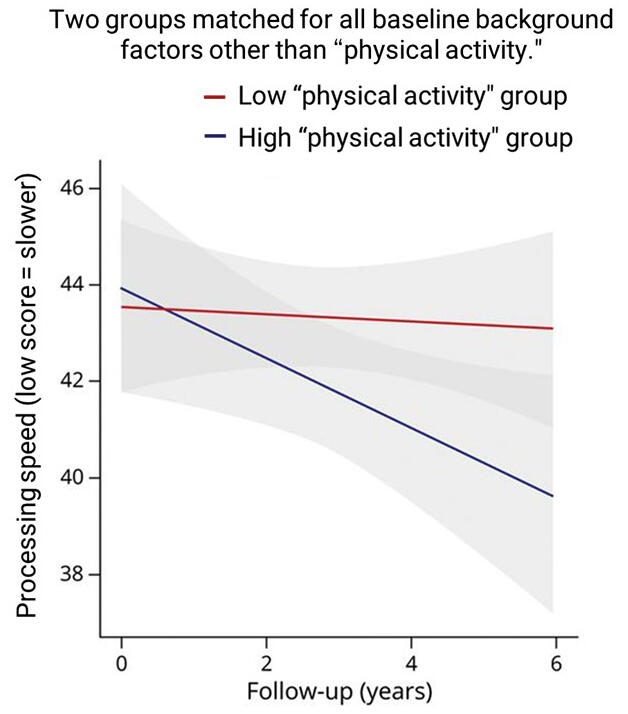Parkinson's disease is caused by a lack of the neurotransmitter dopamine. As a result, it causes physical symptoms such as tremors in the arms and legs, muscle stiffness, and loss of mobility. It also causes poor balance, leading to falls. Although many treatments for symptoms exist, there are no effective therapies to control the disease's progression since its cause is unknown. Exercise therapy has been the focus of much attention in recent years, but it has not been scientifically validated.
In response to this, Professor Ryosuke Takahashi and his research group at Kyoto University's Graduate School of Medicine analyzed data from an international multi-facility observational study of 237 Parkinson's patients to examine the long-term effects of exercise therapy over five to six years. Results showed that in tests of processing ability, in which participants had to fill in the numbers corresponding to the symbols within a time limit, the group that continued to engage in physical activity for two to three hours a day showed less decline in processing speed over long periods.
The group also found that exercise habits can be effective in preventing declines in walking and postural stability and that regular housework can prevent declines in functionality in daily activities. It is hoped that these habits will slow the disease's progression. These results suggest that maintaining daily physical activity and ongoing exercise habits may lead to long-term improvements and that it is important to tailor treatments to the patient's condition. The group is now utilizing big data on humans to research methods of preventing neurodegeneration, a factor in the development of dementia.





